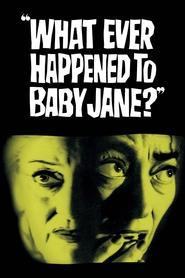The "Jane versus Blanche: who is worse?" debate obscures that the real star of the show is the film's screenplay which rewards greater scrutiny at almost every turn. For instance, note that whilst the staircase obviously represents Blache being cut off from the world (by Jane), it is only after she makes it downstairs that she is subject to physical violence. Was the second floor of the house also a place of psychological safety for her as well? Edwin is also an multi-faceted representative of the parasite class that surrounds those like Jane to drain them of their money, and the film seems to endorse the idea of a meddling neighbour as well… to a certain, rather ambiguous, degree. There are some shorter and cuter payoffs as well — for example, the film equating the daytime TV reruns of Blanche's early blockbusters as 'dogfood' (hah!) and Jane's mid-movie lie that Blanche has "moved to the beach". By the end, we will see that this improvised prediction becomes grimly true.
Also, note the concordance between the shots of Blanche pressing the loud buzzer 'at' Jane in the first half of the movie and the later shot of the police officer pressing the buzzer as well — both of which have the effect of making Jane feel oppressed. It is interesting to connect this literal button-pushing with the behaviourist theories of psychologist B. F. Skinner that were swirling around popular culture at the time. These were claims that people could be conditioned into instinctive responses that were against their better judgement, theories that have had a second life in apologist critiques of modern social media. The introduction of these behaviourist ideas has the effect of creating a second-order psychological tension within the film, as Skinner's post-WW2 theories are at odds with the (pre-war) Freudian implications within the film that it was, somehow, all the parents' fault.

